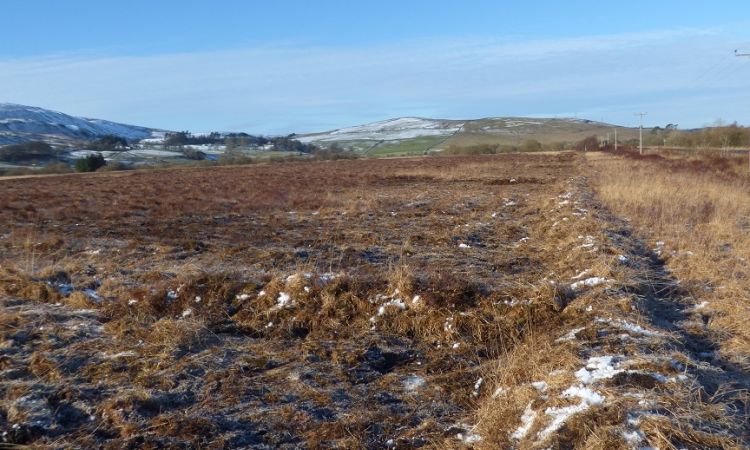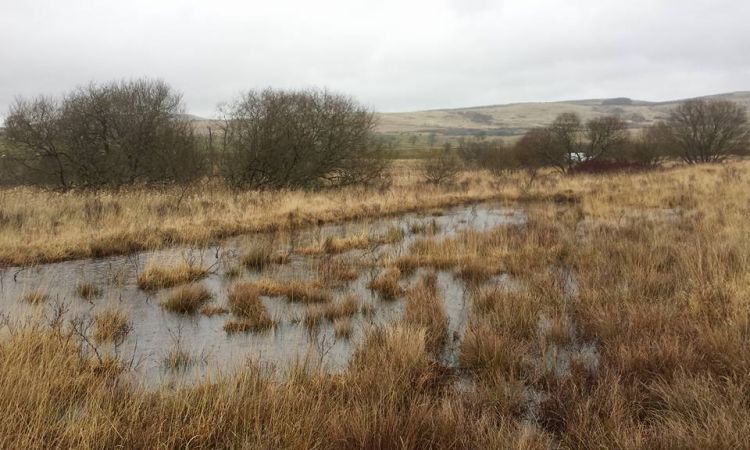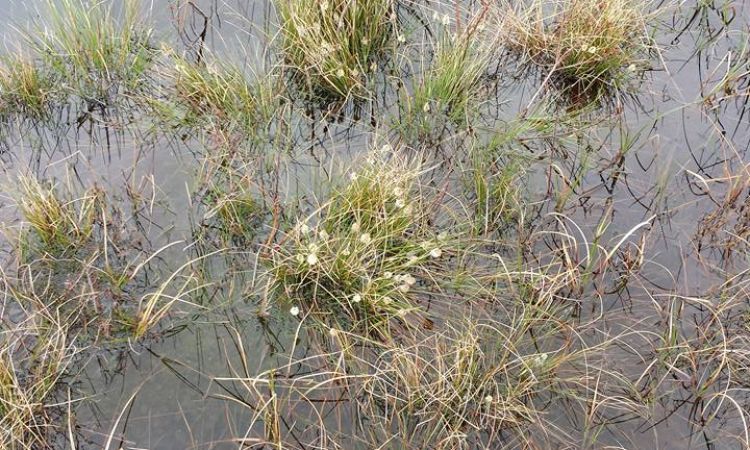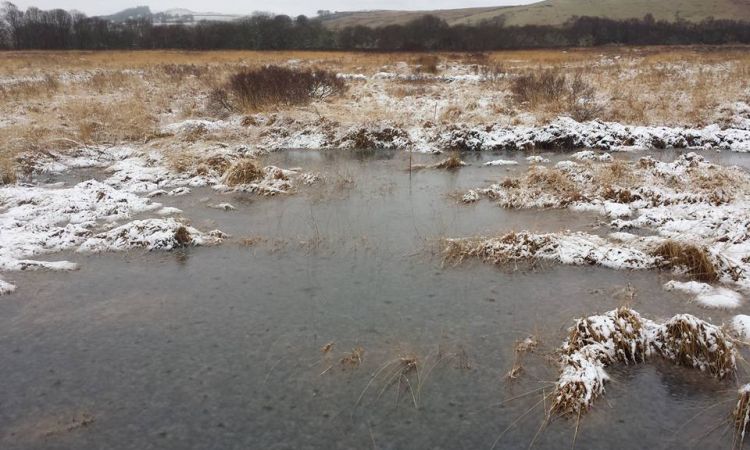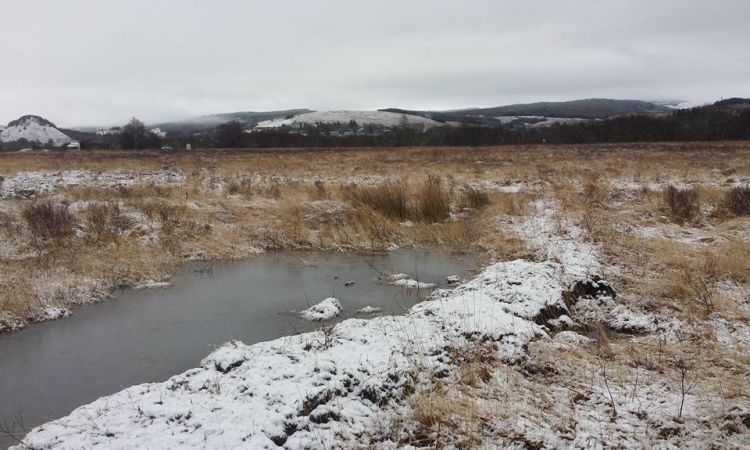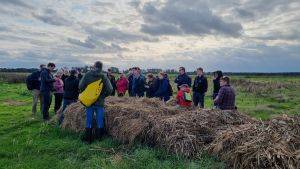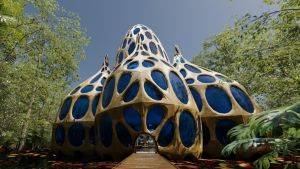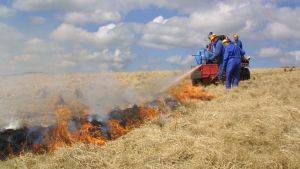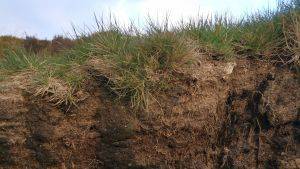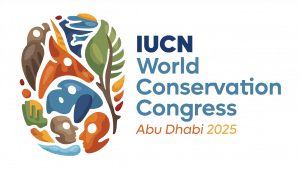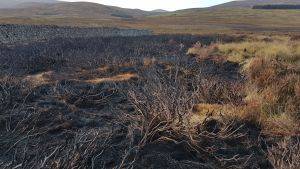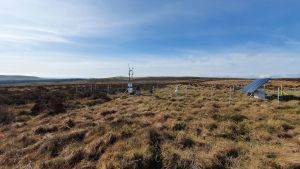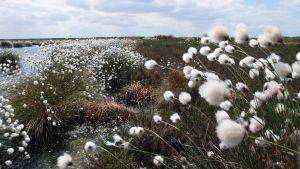Dalmellington Moss bog enhancement 2014 & 2017
Introduction
The East Ayrshire Coalfield Environment Initiative (CEI) and partners have been working to improve bog habitats in the Coalfields since 2013 as part of the East Ayrshire Coalfields Nature Network and EcoCo LIFE projects.
The CEI have delivered 430 hectares of bog enhancement work across three sites since 2013, utilising funding from the SEPA Water Environment Fund, the Heritage Lottery Fund, Cumnock and Doon Valley Minerals Trust, Peatland Action Fund and the LIFE+ financial instrument of the European Community (LIFE13 BIO/UK/000428 EcoCo LIFE).
Through the EcoCo LIFE project, the CEI will continue to explore opportunities to work with land managers to enhance bog habitats. The project has commissioned a number of habitat surveys with the aims of prioritising sites for enhancement, gathering baseline habitat data and informing enhancement and management plans.
The CEI has carried out enhancement work at Airds Moss, within the RSPB Reserve; Dalmellington Moss SSSI, a SWT Reserve; Tappethill Moss, a Forestry Commission Scotland plantation; Shiel Farm, at the western end of the Airds Moss SAC; and Low Moss, a raised bog near Lugar. This work has been carried out by highly skilled contractors who have used a range of techniques, including constructing peat and plastic piling dams, creating trench bunds, tree felling and scrub clearance. The CEI have used their expertise and taken advice from others experienced in bog restoration to use the best available methods to ensure the best possible results. We hope that the improvements at our enhancement sites will benefit bog wildlife, and will be carrying out surveys with volunteers to monitor the success of the enhancement work and to collect biological and habitat data.
Description
Dalmellington Moss is 28.5 ha of lowland raised bog surrounded by marsh, grassland and willow carr within the River Doon valley. The site is situated just west of the village of Dalmellington in East Ayrshire and is owned by Scottish Wildlife Trust (SWT), who manage it as a wildlife reserve.
Along the northern boundary runs the A713 Ayr-Dalmellington road, and to the south is the Cumnock burn, which flows into Muck Water and then the River Doon. To the south of the raised bog is “Sillyhole Moss”, an area of valley mire including willow/birch carr and lagg fen.
50 years ago, an extensive network of drainage ditches were cut across Dalmellington Moss. This has resulted in drying, which has led to dense heather and reduced Sphagnum cover. There is also encroachment of birch and burning has been a past issue. Previous attempts to restore the bog include installing forty plastic-coated metal sheet dams in 1994-5, 16 monitoring dipwells in 1995, and four plastic piling dams in 2005. The dipwells indicate that the damming did raise the water table, but not throughout the site. A hydrological survey in 2013 revealed that the ditches were having a significant effect on the bog, and proposed a number of measures to slow water loss and raise water levels. These recommendations were taken forward by the CEI and SWT to be carried out in 2014-15.
Project Aims
The work carried out at Dalmellington Moss will help to protect and enhance an important peatland habitat. Through our ongoing monitoring work we are expecting to see the water table become more stable following periods of heavy rain or drought. A wetter bog will inhibit grasses and promote increased Sphagnum moss cover, providing a better quality habitat for peatland specialist plants and animals.
It is our aim that by preventing further drying and encouraging active peat formation, the bog will have a net carbon gain, helping to address climate change. A healthier bog may also help to hold water during heavy rainfall and release it more slowly, helping to reduce local flash flooding.
Dalmellington Moss is in easy reach of Dalmellington village, and provides an oasis of open habitat that can be enjoyed by nature enthusiasts or those simply craving the tranquillity of the countryside. The site’s visibility from the main road gives it a special place in the local landscape, keeping it in the public consciousness.
By restoring the bog we are safeguarding it for future generations and inspiring people to conserve precious peatland habitats. The CEI has recently installed a network of dipwells and automatic data loggers that will enable the CEI and SWT to carry out ongoing monitoring of the site’s hydrology and will continue to survey fixed vegetation quadrats on an annual basis.
Restoration Delivered
The initial phase of re-wetting work was carried out in early 2015. Using a low-ground pressure excavator to minimise damage to the sensitive bog surface, the operator constructed a 1.1km trench bund along the northern boundary to slow water loss via the deep roadside ditch. The trench bund was dug to 1.5 metres, raised above the ground by 30cm and topped with vegetation to prevent the peat from eroding. The team also repaired existing plastic piling dams by pushing them deeper into the ditch and topping them with wide peat dams. They also cleared a 30m section of ditch at the north-west corner of the site. Scrub removal, including herbicide treatment of the stumps, was undertaken by SWT staff and a group of helpful SWT volunteers. In 2017, CEI carried out a 2nd phase of damming to lengthen and reinforce the existing dams in the two main ditches on the site. 12 new peat dams were installed and four existing dams were modified.
Biodiversity
Dalmellington Moss is home to specialist bog plants including a good assemblage of Sphagnum mosses, the principle peat-forming plant. There is also cranberry Vaccinium oxycoccos, bog rosemary Andromeda poliofolia, bog asphodel Narthecium ossifragum and bog myrtle Myrica gale as well as heathers and grasses. In areas where the site has seen significant drying, purple moor grass Molinia caerulea is dominant.
Invertebrates are of special interest and include a number of scarce moths, beetles and spiders, and the locally rare large heath butterfly Coenonympha tullia.
Project Name: Dalmellington Moss bog enhancement 2014 & 2017
Organisation / Lead partner: East Ayrshire Coalfield Environment Initiative
Location: Dalmellington, Ayrshire
Approximate area covered: 28 ha
Conservation Status: Site of Special Scientific Interest (SSSI), Nature Reserve (NR), Local Wildlife Site
Predominately: Upland
Peat Habitats: Lowland raised bog, Fen
Project Type: Restoration, Management, Research, Citizen science/ community engagement.
Year Project Began: 2013
Project End Date: 2018

